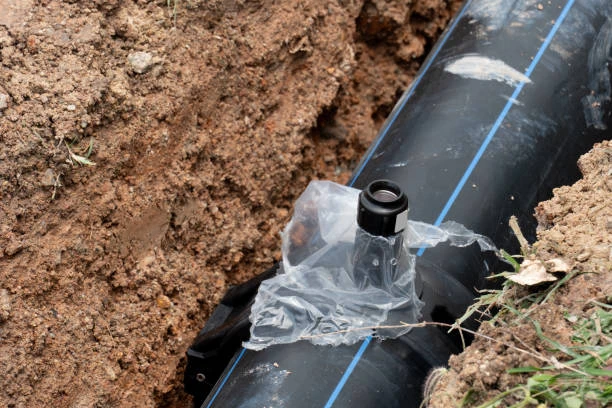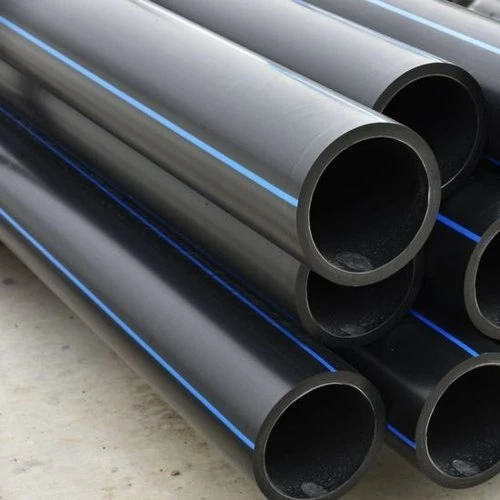In the modern construction and infrastructure industries, the demand for reliable, durable, and cost-effective piping solutions continues to grow. Over the years, plastic has emerged as the material of choice for pipes in various applications. This article explores why plastic pipes are preferred, the different types of plastic materials used, and their benefits in various sectors. Additionally, we will examine how plastic pipes compare to other materials, such as metal, and why they remain a popular choice in both residential and industrial projects.
Why Plastic Is the Material of Choice for Pipes
The Benefits of Plastic Pipes in Modern Construction
Plastic pipes are widely used in residential, commercial, and industrial construction due to their many advantages over traditional materials like metal and clay. One of the key reasons plastic is the material of choice for pipes is its cost-effectiveness. Plastic pipes are generally more affordable than metal counterparts, making them an attractive option for large-scale projects.
In addition to being cost-effective, plastic pipes are lighter and easier to handle during installation. Their lightweight nature reduces labor costs and makes the installation process faster and more efficient. Furthermore, plastic pipes do not require special tools or skills for installation, which further lowers the overall costs associated with their use.
Plastic pipes are also resistant to corrosion, unlike metal pipes, which can deteriorate over time due to exposure to water, chemicals, and other environmental factors. The durability of plastic ensures that pipes last longer, reducing the need for frequent repairs or replacements. This is particularly important in industries such as plumbing, oil and gas, and water distribution, where the reliability of pipes is essential.
Types of Plastic Pipes
The Various Plastic Materials Used for Pipes
There are several types of plastic materials used in the production of pipes, each offering specific benefits for different applications. The most common types of plastic pipes include:
- PVC (Polyvinyl Chloride): PVC pipes are one of the most widely used plastic pipes due to their strength, versatility, and low cost. They are ideal for water distribution, sewer systems, and irrigation. PVC pipes are resistant to corrosion and chemicals, making them durable and long-lasting.
- CPVC (Chlorinated Polyvinyl Chloride): Manufacturers chlorinate PVC to create CPVC pipes, increasing their heat resistance. They often use these pipes in hot water systems, plumbing, and industrial applications where higher temperatures are involved.
- HDPE (High-Density Polyethylene): Manufacturers make HDPE pipes known for their flexibility and impact resistance. They commonly use these pipes in water and gas distribution systems and in environments that experience fluctuating temperatures or pressure.
- PEX (Cross-Linked Polyethylene): PEX pipes are flexible, easy to install, and resistant to freezing. They are commonly used in residential plumbing systems, heating systems, and radiant floor heating applications.
Each type of plastic pipe offers specific advantages, and choosing the right material depends on the intended application, temperature, pressure, and chemical exposure.
Environmental Advantages of Plastic Pipes
Plastic Pipes and Sustainability
In recent years, sustainability has become a key focus for industries worldwide, and plastic pipes have earned praise for their environmental benefits. One of the most notable advantages is that plastic pipes are lightweight and require fewer resources to manufacture compared to metal pipes. This results in a lower carbon footprint during production and transportation.
Plastic pipes are also highly durable, meaning they last longer than other materials, reducing the need for replacements. Additionally, manufacturers can make plastic pipes from recycled materials, which helps reduce waste and promote a circular economy. Well-established recycling programs for plastic materials make it easier for manufacturers to source recycled plastic and incorporate it into new products.
Another environmental benefit of plastic pipes is that they are non-toxic and resistant to the growth of bacteria and mold. In plumbing and water distribution systems, this ensures that the water transported through the pipes remains clean and safe for consumption.
Plastic Pipes vs. Metal Pipes
Why Plastic is Better than Metal for Pipes
When comparing plastic pipes to metal pipes, the advantages of plastic become clear. Metal pipes, such as those made from steel or copper, are prone to corrosion, rust, and scaling over time, especially when exposed to water or certain chemicals. This leads to leaks, reduced flow rates, and the need for frequent repairs and replacements. In contrast, plastic pipes are resistant to corrosion, ensuring they last longer and perform better in the long run.
Additionally, plastic pipes are less affected by environmental factors like temperature changes. While metal pipes can expand or contract with temperature fluctuations, plastic pipes maintain their shape and performance across a wide range of temperatures. This makes them suitable for both hot and cold water applications.
Another major advantage of plastic pipes over metal is their resistance to chemical exposure. Manufacturers make plastic pipes, especially those made from materials like PVC and HDPE, highly resistant to a wide range of chemicals, making them ideal for industrial applications where chemicals are transported. In contrast, acids or other harsh substances can easily corrode metal pipes.
Lastly, plastic pipes are significantly more cost-effective than metal pipes. The lower material cost, coupled with the ease of installation, makes plastic pipes a more affordable option for large-scale construction projects. This cost advantage, combined with their durability, makes plastic pipes the preferred choice in a wide range of industries.

Applications of Choice for Pipes
Where Plastic Pipes Are Used
Plastic pipes are used in a wide variety of applications, including but not limited to:
- Water Distribution: We commonly use plastic pipes for potable water distribution due to their corrosion resistance and safety. Municipal water systems widely use PVC and HDPE pipes to deliver clean water to households and businesses.
- Sewage and Drainage: Plastic pipes are ideal for sewage systems because they are resistant to the harmful effects of wastewater, such as corrosion and chemical exposure. PVC and HDPE pipes are often used for sewer and stormwater systems.
- Irrigation: In agriculture, farmers use plastic pipes for irrigation systems because they are lightweight and easy to install in large-scale farming operations.
- Oil and Gas: The oil and gas industry uses plastic pipes, particularly HDPE, to transport liquids and gases over long distances due to their strength and resistance to chemicals.
- Industrial and Chemical Processing: Industries often use plastic pipes to transport chemicals and other fluids, as they can handle a wide range of chemicals without corroding or breaking down.
The versatility of plastic pipes makes them an essential part of modern infrastructure across various industries.
Conclusion in Choice for Pipes
The Clear Material of Choice
Plastic has undoubtedly become the material of choice for pipes in many industries due to its numerous advantages. Plastic pipes offer cost-effectiveness, durability, environmental benefits, and ease of installation compared to other materials like metal. Whether for water distribution, irrigation, sewage systems, or industrial applications, plastic pipes have proven to be a reliable and sustainable solution.
With various types of plastic pipes available, such as PVC, HDPE, and PEX, manufacturers and builders can select the right material based on the specific needs of their projects. As sustainability becomes an even greater priority globally, the use of plastic pipes will continue to grow, providing long-lasting and eco-friendly solutions for infrastructure projects worldwide.
Frequently Asked Questions (FAQs)
1. What makes plastic pipes a better choice than metal pipes?
Plastic pipes are corrosion-resistant, lightweight, durable, and cost-effective, making them ideal for a wide range of applications.
2. Can plastic pipes be used for both hot and cold water?
Yes, manufacturers design plastic pipes like CPVC and PEX to handle both hot and cold water systems.
3. Are plastic pipes environmentally friendly?
Yes, manufacturers make plastic pipes from recyclable materials, design them to reduce carbon footprints, and ensure they are non-toxic, making them eco-friendly.
4. What are the most common types of plastic pipes?
The most common types of plastic pipes are PVC, CPVC, HDPE, and PEX.
5. Are plastic pipes suitable for industrial applications?
Yes, industries widely use plastic pipes for transporting chemicals, gases, and liquids due to their resistance to corrosion and chemicals.


















